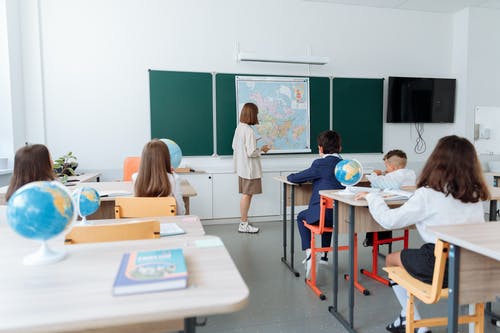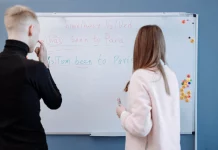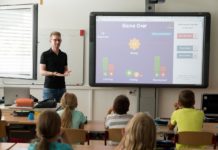The importance of inclusion cannot be overstated in an education setting. The specially-abled children are no longer supposed to confine themselves to “Special Ed” classrooms and can be seen in the playgrounds or at mealtimes getting along with the other kids.
When put in with the others, kids with special needs actually thrive. Free to interact with kids of their age, in spite of their disabilities, can make them feel as part of the class and, more importantly, the community.
Adapting your teaching style for children with autism spectrum disorder and other learning disabilities, such as ADHD, will help them perform better academically and socially.
Setting up the classroom in a way that is conducive to special learning requires teachers to be innovative and creative in their approach. It’s easier to manage an all-inclusive classroom if simple, personalized teaching strategies are used.
Using the following tips, you can create an environment where students with special needs can flourish.
Divide Students into Smaller Groups
It is possible to personalize your teaching while, at the same time, saving instruction time by dividing the students into groups according to their abilities. In math class, for instance, one group can work on the basics, and another can practice geometry. Students would be grouped together in line with their education pathways based on similar skills and educational objectives.
Learn Thematically
Thematic instruction is a form of instruction that establishes links between themes of one subject with subject areas. Students in special education classes have had great academic success when they are taught this way.
Whether it be a current event, honing reading comprehension skills, writing topics, or a historical event, a “theme” can be anything you want to explore. For instance, the study of a historical event could have cross overs with a concept from Social Studies or even Science. You should choose a theme that attracts students’ attention and keeps them interested.
Creating specifically curated lesson plans that enhance students’ learning abilities is a task that only a teacher credentialed in MEd in Special Education Administration can feel equal to. Their ability to create their own specialized lessons for children with special learning abilities makes them easier hires for schools that require their teachers to have that level of commitment toward the needs of the special students.
Consider the Student Strengths
Teachers need to focus more on each individual student’s strengths. For instance, if a student is interested in dinosaurs, the teacher can use dinosaurs as an example when teaching them about something else. By doing this, you’ll succeed in retaining their attention and make them interested in learning.
This, however, requires the teachers to be involved in the students’ lives, so that they can be better positioned to influence their behavior and learning.
Combine ‘the Basics’ with Specialized Instruction
One way to instruct a class of students with multiple and different learning requirements and abilities is to instruct the class as a whole once and then move on to tailored individual instructions. Regardless of their skill level, students can benefit from this approach as it considers their need for one-on-one learning with the instructor.
There are a number of general concepts that could be taught to supplement what students are learning in lectures. These include, but are not limited to, reading comprehension strategies, math basics, organizing writing ideas, or even scientific theories.
Then, once this knowledge is acquired, students can apply it in their individual assignments. If the students are more advanced, the teacher can always give them additional material.
Establish Learning Centers Within the Classroom
Students can also be grouped into classroom centers. Each center would be a specialized zone, complete with lesson materials and plans for the students to explore on their own. The students can also seek the teacher’s guidance—who would be making the rounds withing the class—on specific questions and concepts.
The groups could be facilitated by a teaching assistant, parent, or volunteer. Having such centers would be like striking a balance between being self-motivated and asking for the teacher’s help.
Ensure Coherence
Changing your routine frequently can be stressful for any child. However, it can be extremely disrupting to learning for children with special needs. On the other hand, a constructive and stable learning routine can help children with conditions, such as autism and Asperger’s, get used to the routine and know in advance what is to come. So, the real challenge as a teacher to children with special needs to maintain consistency throughout the routine and classroom.
Sticking to a routine helps the special education students stay on track, which makes it the ideal instructional strategy when it comes to teaching them. Consistency could be achieved through a daily or weekly schedules based on the requirements of a lesson.
If your class is way too large, you may need to adjust your schedule a little to accommodate learning for each individual group. For example, depending on the student, some might need more time to learn a specific lesson while others may be better at absorbing the lessons readily.
Even so, it’s good to stick to a routine for the entire class. The feeling of stability it brings will help everyone get ready for the day.
Offer Some Variation in Learning Materials
A key consideration when developing instructional strategies for special education is that your classroom may have to accommodate a wide range of learning strengths and abilities. In addition, the needs of every student are different, from physical limitations to neurodivergence – so it’s essential to make sure that everyone is learning at their own pace.
Teachers in special education are often more accessible than the ones in mainstream classrooms, where lessons must adhere to certain standards established by the education boards and bodies. These teachers can tailor their teaching style for individual students specifically. Part of this flexibility is owed to the fact that their students comprise of children with varied levels of learning disabilities.
Go out of your way and maintain a class that is equipped with wide-ranging learning materials and aids. These can include books, toys, or gadgets that the students can use to support or supplement their learning. Instead of always imposing on them to go through the dry and hard-to-read textbooks, you can let them explore their own curiosity from time to time.
Clearly Define Their Goals
Monitoring every individual student’s progress can be challenging when you’re teaching students with a variety of abilities and disabilities. But regardless of the special education strategies you use, it is vital to ensure your children have clear objectives. By having clear goals, your children will be able to reach their full potential.
You should always encourage your students to have personal goals, from weekly targets to exam results. Regularly discuss expectations with each child to ensure they feel challenged, valued, and fulfilled.
The Way Forward
If teachers incorporate appropriate teaching strategies into their daily class routines, learning for students with special needs can be a positive experience. Instead of insulating them from the world, teachers should incorporate them into the mainstream class settings, albeit they should still be paid special attention in line with their needs.









